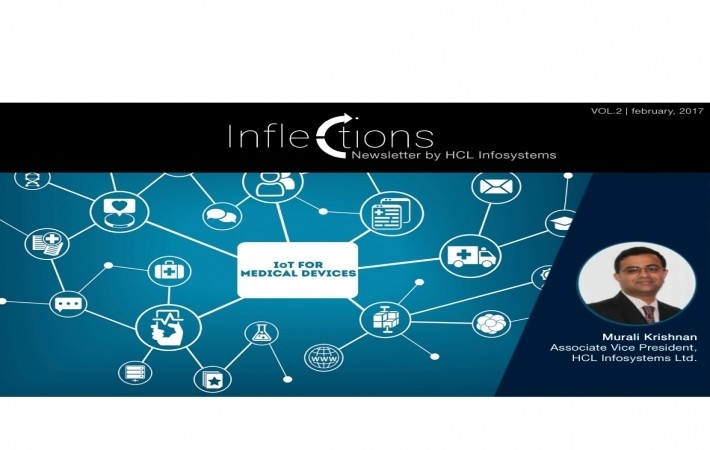
Published on 02/18/2017 | Technology
Let´s begin with a simple quiz. Do you or any of your friends or family use a fitness band to track your heartbeat and pulse rate? Or a smart watch to track steps taken, speed and calories burnt? Or know someone who has a pacemaker implanted? If the answer to any or all of the above is in the positive, then you are already a part of the latest and biggest wave in digital healthcare – IoMT or Internet of Medical Things. Armed with a solid head start, IoMT is likely to gain more traction this year.
Digital technologies & processes are proving to be the game changers in the healthcare industry by minimizing human intervention and dependency, allowing hospitals and medical professionals to keep tabs on the location/ condition of medical devices, health of patient´s etc. Technology is enabling processes to be streamlined and re-engineered to create paperless automated digital workflows. For example, Electronic Medical Records (EMRs) are being widely implemented to help track patient health data and support medical decisions. Though the use of ICT in the healthcare remains low in comparison to many countries, both the Union and the State Governments are working together to make use of the immense opportunities offered by ICT.
Technologies such as Internet of Medical Things (IoMT) can be the game changer in Indian Healthcare by reducing human intervention and dependency. Mobile medical applications or wearable devices now allow patient´s to capture their health data. Digital medical imaging systems are quickening the process of reviewing medical images by physicians and other healthcare professionals.
Imagine an apartment complex in any of our metropolis or even a tier-II town, which has more than 200 elderly members living all by themselves. Let´s envisage a situation where the medical records of all the members living in that community are captured electronically. Further, if the elderly members of the community are tracked or monitored remotely with a sensor on their pendant or bangle, then in case of any medical emergency for such patient´s, the patient´s relatives can be alerted immediately. Further the doctor will be able to take informed decisions quickly on the basis of accumulated data of the patient´s.
This reduces a lot of ambiguity about time-critical information (and thereby quickens any required interventions) like allergy to drugs, current medication to manage medical condition, blood group, last medical health check-up so on and so forth. Hospitals should extend workflow through mobile health (mHealth) initiatives, which enables physicians and patient´s to use mobile devices such as smartphones and tablets to record and find the right information and resources anytime from any location.
This is just one view of how an IoT technology could look and the impact it might have on both the patient and provider. However, this transition to embracing IoT technologies has its unique set of challenges. With the rapid advances in technology there are platforms available to accurately capture data from various sources, such as Electronic medical records (EMRs), wearables, clinical information systems, mobile devices and more. Humongous amount of Patient-Generated Data (PGD) would be handled by an ecosystem of diverse set of organisations across geographies, each consuming the data for a different purpose. Analytics will be the key to unlock this massive volume of data generated. Also, challenges arise when sensitive health information is handled by various organisations in the ecosystem. Thus, the real extent of benefits of IoT and digital PGD will rely upon an effective answer to these challenges.
IoT technologies promise exciting possibilities for the healthcare sector. The challenges that the medical industry faces in this transition are substantial but surmountable. The Digital India campaign by the government is also expected to enable new technologies like IoMT to increasingly play a key role in providing efficient and better healthcare to many more Indians. I am positive that in 2017 we will make substantial progress in touching more lives through technology
http://hcli.co/Bzoh3097Uhm
#IoT, # Healthcare, # Medical Devices, # IoMT